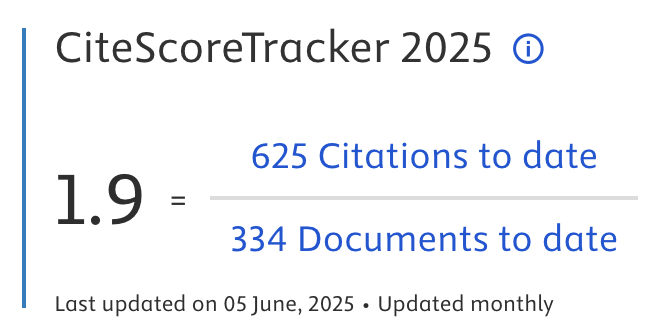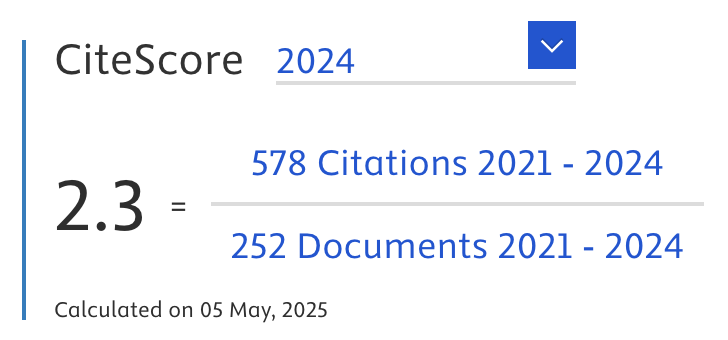Assessing Drought Risk in Forest Zones Near Coal Mines with TVDI
Abstract
This study is quantitative research employing survey techniques and spatial modeling. In the research area, particularly in forested areas, the NDVI values range from 0.25 to 0.55 with LST values of 29°C to 37°C. Cooler temperatures below 34°C were observed in the southwest (outside the mining area). The LST values indicate high temperatures above 37°C in the coal mining area, with effects extending up to 6 km. The linear regression equation between NDVI and LST in the coal mining area, with a regression equation of y = -20.888x + 40.458; R^2 = 0.83; r = -0.91, shows an inverse relationship between NDVI increase and ground surface temperature, indicating a good model fit with the data and a strong negative linear relationship between the two variables. The Urban Heat Island (UHI) effect in the mining area, especially at the mining center, shows a UHI with a temperature difference of more than 0.6 degrees Celsius compared to the cooler surrounding area. At the center of the coal mining area, the TVDI value is 0.6-0.8 (high-very high), but in the eastern part of the mine in forested areas with a certain soil type, the TVDI value is 0.2-0.6 (moderately dry - dry), while in other parts of the forested area with a different soil type, the NDVI value is < 0.2 (moist). There is a difference in response to different soil types. Drought increases in the forested areas around the mining site, affecting ecosystem productivity and soil moisture.
Article Metrics
Abstract: 343 Viewers PDF: 187 ViewersKeywords
Full Text:
PDFRefbacks
- There are currently no refbacks.

Journal of Applied Data Sciences
| ISSN | : | 2723-6471 (Online) |
| Collaborated with | : | Computer Science and Systems Information Technology, King Abdulaziz University, Kingdom of Saudi Arabia. |
| Publisher | : | Bright Publisher |
| Website | : | http://bright-journal.org/JADS |
| : | taqwa@amikompurwokerto.ac.id (principal contact) | |
| support@bright-journal.org (technical issues) |
 This work is licensed under a Creative Commons Attribution-ShareAlike 4.0
This work is licensed under a Creative Commons Attribution-ShareAlike 4.0





.png)